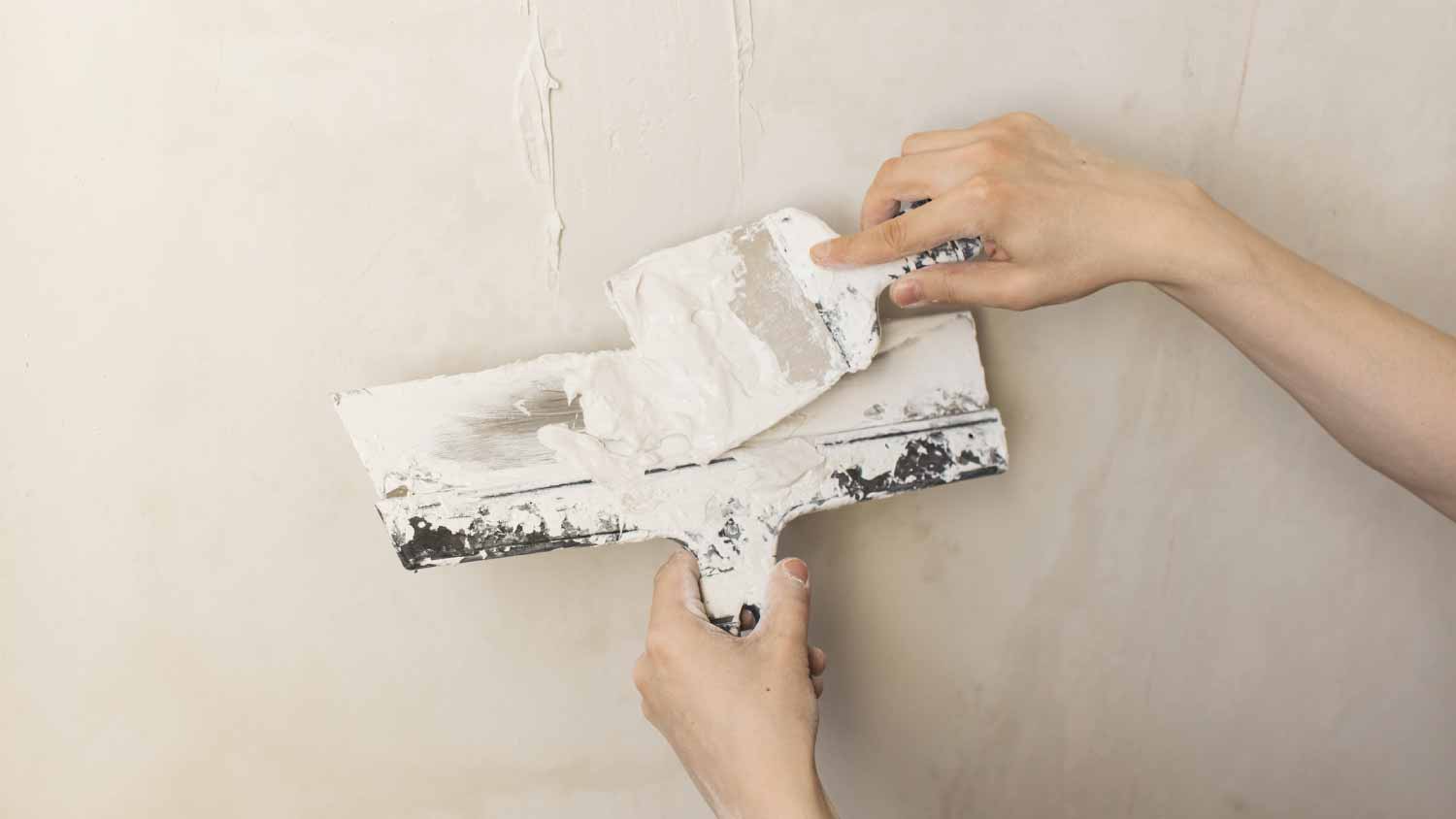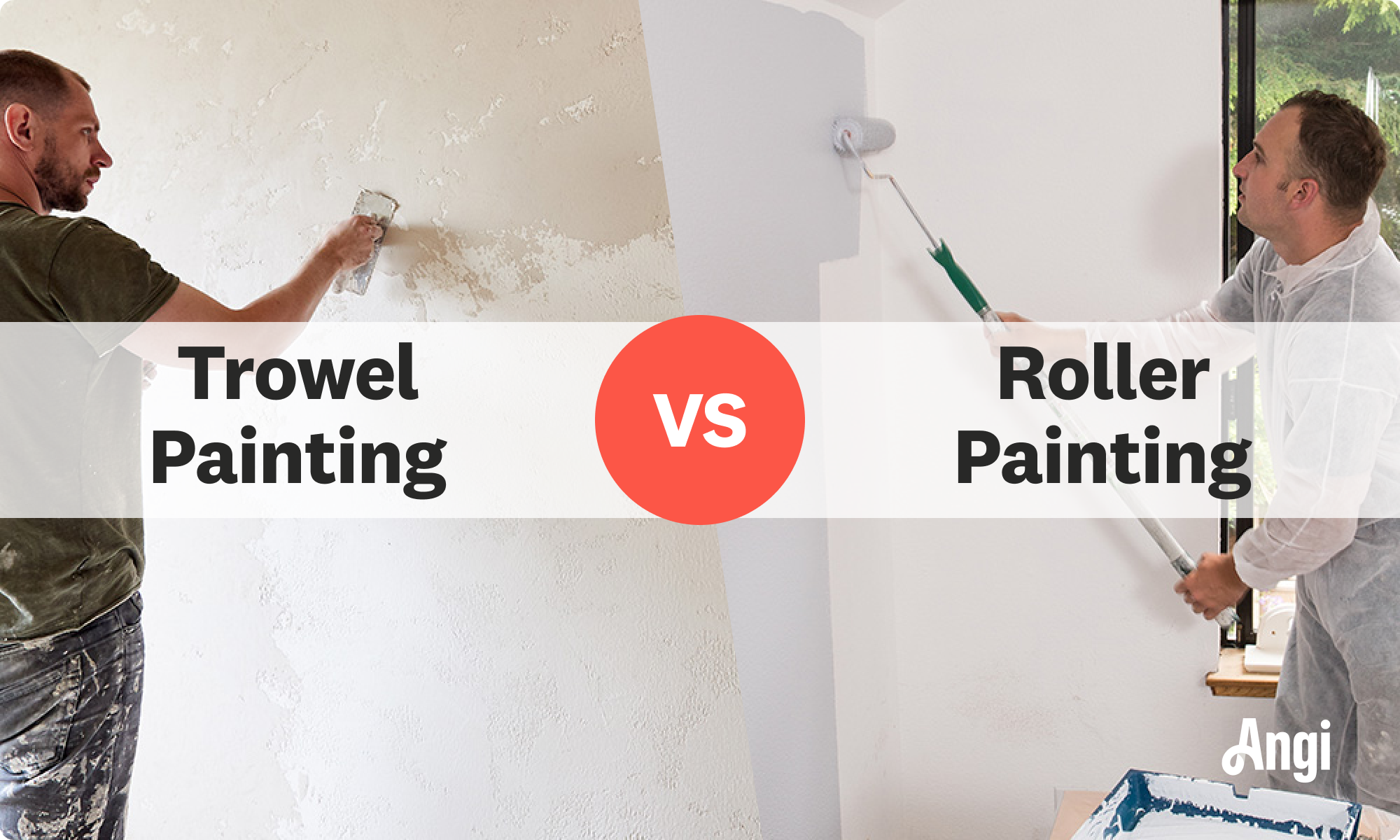
The cost to paint the interior of a house in Minneapolis, MN depends on size, layout, type of surface, and more. Learn what factors can influence your total in this guide.
You’re going to be better off with a brush


In most cases, it’s best not to use a trowel to paint an interior wall.
You can use trowels to create texture and smooth drywall joints.
Rollers, sprayers, and brushes are best for painting interior walls.
As you plan your next painting project—or, perhaps, you’re ready to dive into a productive painting session and realize you’re out of rollers—you might be wondering whether you can use a trowel to paint interior walls. Trowels are indeed for use on walls, but primarily for creating decorative, textured finishes rather than applying liquid paint. Learn when—and when not—to use a trowel to decide what tool is best for your walls.
A trowel is a flat-bladed tool commonly used in masonry, drywall, and plasterwork. It helps spread materials such as cement, mortar, and joint compound smoothly and evenly over a surface. Unlike painting with brushes or rollers that create uniform coverage, trowel techniques create texture, depth, and visual interest.
On interior walls, you can use a trowel to:
Apply plaster or drywall mud
Smooth out joint compound
Create artistic wall textures, such as Venetian plaster finishes

If you want streaks, clumps, drips, splatters, uneven coverage, and a ton of frustration—then technically, yes. However, you’ll likely waste time (and paint) trying to make it work. In the majority of cases, you should not paint walls with a trowel. Paint needs to be applied in thin, even coats. Trowels aren’t absorbent or designed to hold liquid, so they don’t spread paint well. If the thought of finding and using the right tools feels like more than you’re up for, a local interior painter can help.

While traditional painting projects call for a brush or roller, there are exceptions. Highly skilled painters often use a trowel when carrying out specialty painting projects. Trowels are the go-to tool for creating customized wall surfaces such as knockdown texture, skip-trowel finishes, and Venetian plaster. Trowels are also used for smoothing drywall seams with joint compound.
Specialty painting is a decorative painting technique that uses unique applications to add distinctive textures, finishes, and effects. For example, faux finishes can mimic the look of wood, marble, or fabric, while metallic finishes offer a shimmering glaze.
Instead of your trusty trowel, these are the best tools for painting interior walls. Most painters reserve brushes for smaller areas, but you can decide whether paint rollers versus sprayers work best for your walls.
Paint rollers:
Great for large, flat surfaces
Provide smooth, even coverage
Work quickly and efficiently
Paint sprayers:
Good for experienced DIYers or professionals
Fastest method for large spaces or textured walls
Paint brushes:
Best for cutting in edges and corners
Ideal for detailed work or trim
If using a trowel feels too advanced or time-consuming, plenty of other wall-painting techniques can help create a similar look more easily. Consider:
Orange peel texture: This method uses either spray or a rolled-on compound to create a bumpy surface that resembles—you guessed it—an orange peel. Other spray-on textures include knockdown and popcorn, although the latter is more often reserved for ceilings.
Sponge painting or rag rolling: Create a soft, textured effect by dabbing color onto the wall with either of these methods.
Textured paint: You can purchase paint with a gritty material (usually sand or silica) already mixed in, so all you need to do is apply it with a roller.
From average costs to expert advice, get all the answers you need to get your job done.

The cost to paint the interior of a house in Minneapolis, MN depends on size, layout, type of surface, and more. Learn what factors can influence your total in this guide.

The cost to paint the interior of a house in Orlando, FL depends on size, layout, type of surface, and more. Learn what factors can influence your total in this guide.

The cost to paint the interior of a house in Atlanta, GA depends on size, layout, type of surface, and more. Learn what factors can influence your total in this guide.

Enamel paint is known for its glossy finish, making it a popular paint type for use on many different types of surfaces both indoors and outdoors. We break down all of its pros, cons, and common uses so you can see if it’s right for your project.

Looking for painted fireplace ideas? Check out these eight top-notch paint colors to help you pick the perfect shade for your fireplace renovation.

Paint on metal doesn’t have to be permanent. Learn how to remove paint from metal yourself with various household methods.